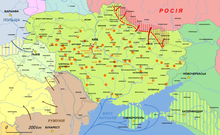2-헥시네
2-Hexyne이 글은 검증을 위해 인용구가 추가로 필요하다.– · · 책· · (2021년 4월 (이를 |
 | |
| 이름 | |
|---|---|
| 선호 IUPAC 이름 헥스-2-나인 | |
| 식별자 | |
3D 모델(JSmol) | |
| 켐스파이더 | |
| ECHA InfoCard | 100.011.015 |
| EC 번호 |
|
펍켐 CID | |
| 유니 | |
CompTox 대시보드 (EPA) | |
| |
| |
| 특성. | |
| C6H10 | |
| 어금질량 | 82.1987 g·messages−1 |
| 밀도 | 0.7317 |
| 녹는점 | -88°C(-126°F, 185K)[1] |
| 비등점 | 83.8°C(182.8°F, 356.9K)[2] |
굴절률(nD) | 1.4135 |
| 위험 | |
| GHS 라벨 표시: | |
   | |
| 위험 | |
| H225, H304, H315, H319 | |
| P210, P233, P240, P241, P242, P243, P264, P280, P301+P310, P302+P352, P303+P361+P353, P305+P351+P338, P321, P331, P332+P313, P337+P313, P362, P370+P378, P403+P235, P405, P501 | |
| 관련 화합물 | |
관련 화합물 | 3-헥시네, 1-헥시네 |
달리 명시된 경우를 제외하고, 표준 상태(25°C [77°F], 100 kPa)의 재료에 대한 데이터가 제공된다. | |
2-헥시는 알카인 그룹에 속하는 유기 화합물이다.이소머와 마찬가지로 CH의610 화학적 공식도 가지고 있다.
반응
2-헥산은 반수소로 2헥센을 생산하거나 헥산에 완전히 수소를 공급할 수 있다.[3]적절한 고귀한 금속 촉매를 사용하면 시스-2-헥센을 선택적으로 형성할 수 있다.[4]
2-헥시는 금 원자에 리간드 역할을 할 수 있다.[5]
강한 황산과 함께 케톤 2헥사논이 생산된다.그러나 이 반응은 또한 중합과 마찰도 일으킨다.[6]
열과 압력 하에서 2헥시는 선형 과점체와 폴리머로 중합된다.이것은 테트라페닐 주석과 함께 몰리브데넘 펜타클로라이드 같은 일부 촉매에 의해 촉진될 수 있다.하지만 지글러-나타 촉매들은 트리플 결합이 방해받기 때문에 아무런 작용도 하지 않는다.[7]
참조
- ^ Campbell, Kenneth N.; Eby, Lawrence T. (October 1941). "The Reduction of Multiple Carbon—Carbon Bonds. III. Further Studies on the Preparation of Olefins from Acetylenes 1,2". Journal of the American Chemical Society. 63 (10): 2683–2685. doi:10.1021/ja01855a050.
- ^ Hennion, G. F.; Sheehan, J. J. (June 1949). "1,2-Hexadiene". Journal of the American Chemical Society. 71 (6): 1964–1966. doi:10.1021/ja01174a017.
- ^ Ulan, Judith G.; Maier, Wilhelm F. (September 1989). "Mechanism of 2-hexyne hydrogenation on heterogeneous palladium". Journal of Molecular Catalysis. 54 (2): 243–261. doi:10.1016/0304-5102(89)80220-2.
- ^ Schrock, Richard R.; Osborn, John A. (April 1976). "Catalytic hydrogenation using cationic rhodium complexes. II. The selective hydrogenation of alkynes to cis olefins". Journal of the American Chemical Society. 98 (8): 2143–2147. doi:10.1021/ja00424a021.
- ^ Zuccaccia, Daniele; Belpassi, Leonardo; Rocchigiani, Luca; Tarantelli, Francesco; Macchioni, Alceo (5 April 2010). "A Phosphine Gold(I) π-Alkyne Complex: Tuning the Metal−Alkyne Bond Character and Counterion Position by the Choice of the Ancillary Ligand". Inorganic Chemistry. 49 (7): 3080–3082. doi:10.1021/ic100093n.
- ^ Thomas, Robert J.; Campbell, Kenneth N.; Hennion, G. F. (March 1938). "Catalytic Hydration of Alkylacetylenes 1". Journal of the American Chemical Society. 60 (3): 718–720. doi:10.1021/ja01270a061.
- ^ Higashimura, Toshinobu; Deng, Yun Xiang; Masuda, Toshio (March 1982). "Polymerization of 2-hexyne and higher 2-alkynes catalyzed by MoCl 5 Ph 4 Sn and WCl 6 Ph 4 Sn 1". Macromolecules. 15 (2): 234–238. doi:10.1021/ma00230a005.


